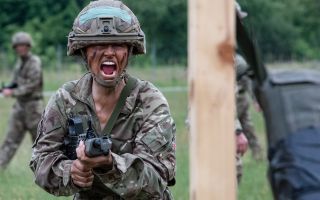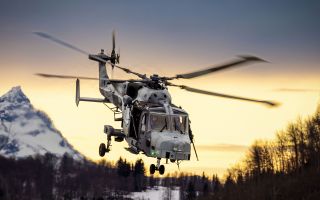
Military training aims to maximise effectiveness, but is it minimising fatal accidents risk?

Solicitor Natasha Mason, who served in the Royal Navy and now offers legal representation to injured service personnel and veterans, agrees military training is vital, but questions whether adequate safeguards are always in place.
Military training is fundamental to operational effectiveness.
With personnel trained to support the critical threat from around the world in an ever-changing environment, it's designed to be arduous and test even the best and fittest of people to their limits.
But is the Ministry of Defence doing all it can to provide a safe training environment and minimise the risk of fatal accidents?
Statistics released by the MOD, published on 26 September 2024, show 162 deaths whilst on military training or exercise between 1 January 2000 and 31 August 2024.
These deaths are varied in nature, ranging from disease to specific accidents.
The statistics show 147 deaths occurred from the trained strength (not Phase 1 or 2).
Of the 147 deaths, 121 have been linked to an injury or accident, indicating an imbalance between rigorous training and the wellbeing and safeguarding of personnel.
Preventable deaths?
Behind each MOD statistic is a family whose lives have changed forever. And witnesses, friends, colleagues and emergency staff whose memories of the fatal accident will likely stay with them day and night.
Are lessons learnt from tragedy – and is the MOD training the trainers adequately to make the right decisions at the right time for the right people?
"Preventable" is a word often used following a military training death.
A 2019 inquest into the death of Corporal Joshua Hoole in 2016 revealed that key safety guidelines and risk assessments had been ignored.
Cpl Hoole died 400 metres from the end of an eight-mile fitness test.
The risk assessment relating to heat was designed to prevent such fatalities.
The death of Royal Marine Ben McQueen in 2018 was again described as "preventable".
The coroner said in 2023 "inadequate signal training contributed to the death".
Royal Marines Recruit Ethan Jones drowned in 2020 after jumping from a landing craft into deep water in Cornwall.
Of the death, the Health and Safety Executive in 2022 made comment: "HSE fully recognises the importance of properly managed realistic military training.
"But this does not mean the training itself should expose recruits to uncontrolled or inadequately controlled hazards.
"HSE expects training exercises to be properly planned and managed through suitable and sufficient risk assessments and safe systems of work."
Like all employers, the MOD has a responsibility to take all reasonably practicable steps to control the risks to the safety of its people.
Taking a strategic approach
All military training across the three services is vastly different and tailored to the unique needs of the time and the specialism.
There is no "one size fits all" safe system of work.
Those who plan military training need to take a strategic approach to improve risk management, have professional oversight of the activities, and possess a genuine commitment to improving standards of health and safety, particularly around high-risk activities or where there is likely to be an inherent risk.
Only when those in direct command of military training – and on the ground as it happens – are adequately and suitably trained to follow health and safety guidelines and enhanced safety measures to reduce preventable fatalities, will military training avoid tragic outcomes.
Following the death of Recruit Jones, the reports indicate the person in charge and present at the time of the death was a corporal.
One must question whether the MOD has trained the trainers sufficiently, giving them the tools to command and control high-risk activities.
Who is managing the risk when Junior Non-Commissioned Officers are in charge of activities that possess an inherent risk?
:: Natasha Mason is a Royal Navy veteran and solicitor in the Military Claims Team at Bolt Burdon Kemp.









